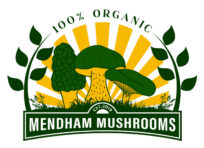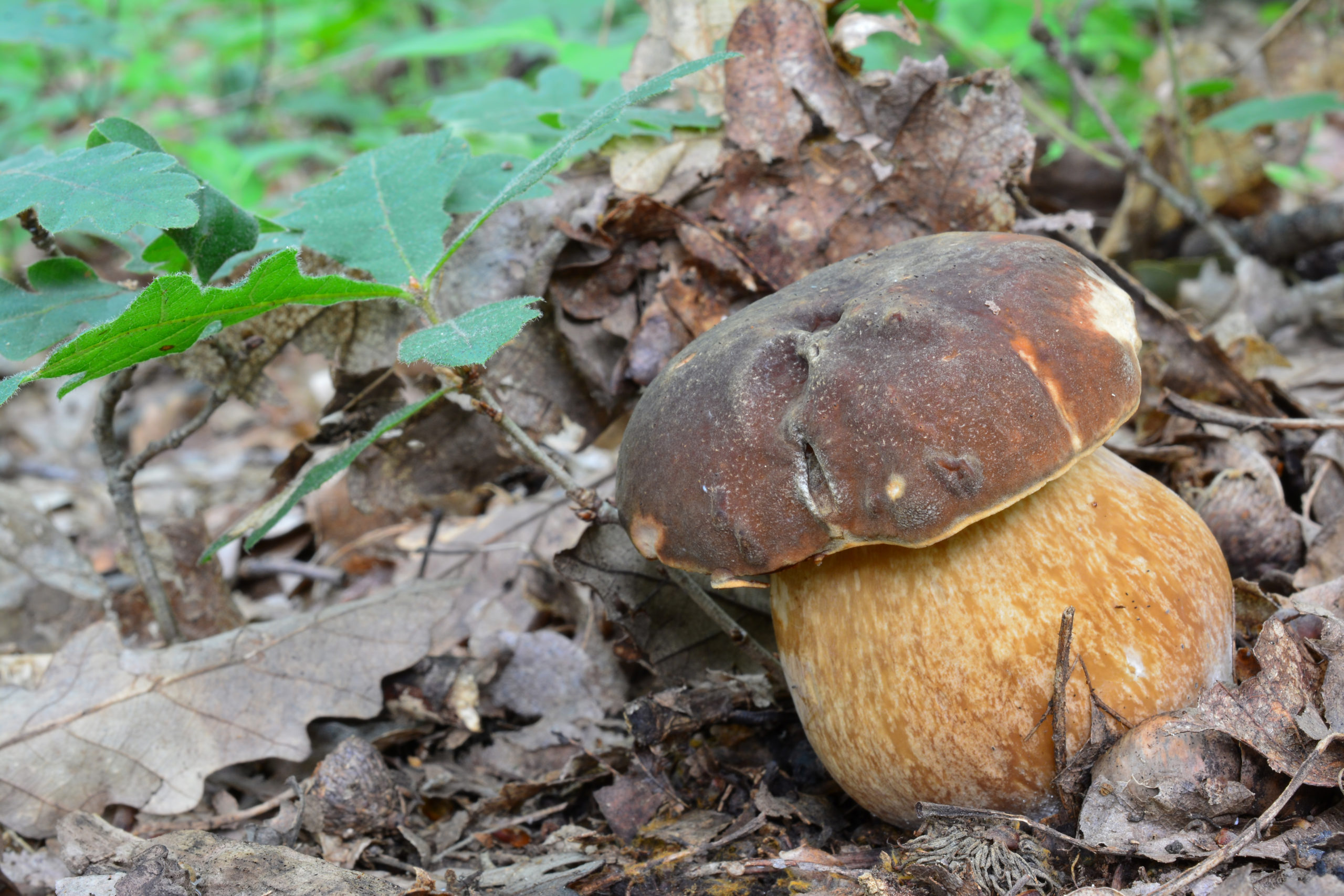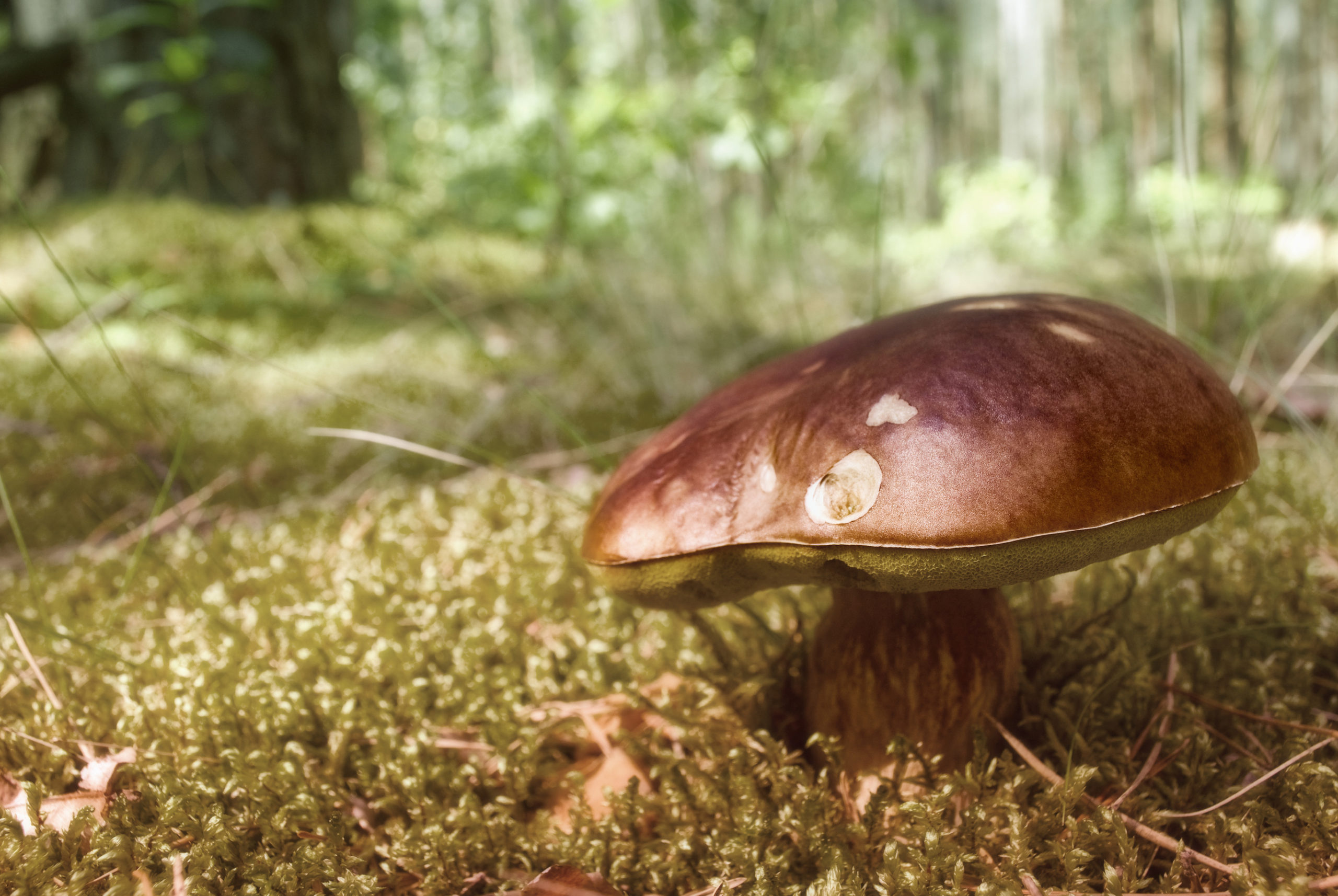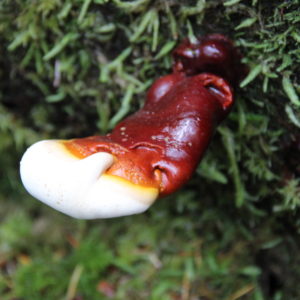The Bronze Bolete is the rarer cousin to the King Bolete. It is sometimes commonly/mistakenly called a Penny Bun or Queen Boletes. They are native to southern UK and southern Europe where they can be found growing alongside walk ways and in oak and beech woodlands. Their caps can range from 7 to 20cm diameter at maturity. The generic name Boletus comes from the Greek bolos, meaning lump of clay; the origin of the specific epithet aereus is Latin and means copper or bronze (in color) – hence the common name Bronze Bolete. Some people refer to it as the Black Porcini or the Black Cap Bolete. It’s earthy smells and mild taste makes it a lovely and highly sought after mushroom by chefs. Bronze Boletes are Mycorrhizal and we grow them around Chestnut Trees and Shagbark Hickory Trees. Bronze Bolete mushrooms fruit in early autumn around September if the conditions are just right. They must be harvested quickly because they are a favorite food of Squirrels and Slugs.
Bronze Bolete mushrooms contain antioxidants, vitamin C, ergothioneine, flavonoids, phenolic compounds, many minerals, like selenium, manganese, zinc, copper, iodine, and molybdenum.
Scientific Name | Boletus aereus |
|---|---|
Common Names | Bronze Bolete, Dark Cep |
Origin | Morris County NJ, USA |
Shelf Life | 8-10 days from harvest |
Flavor | Mild nutty |
Recommended Uses | Cooking |
Cooking Suggestions | Adds flavor in soups and other less flavorful fungi dishes |
Nutrients | Per 4 oz: 20.2g of protein, 82.55g of carbohydrates, 0.45g of fat |
Medical Benefits | They contain antioxidants, vitamin C, ergothioneine, flavonoids, phenolic compounds, many minerals, like selenium, manganese, zinc, copper, iodine, and molybdenum |
Allergy Information | None Known |






Reviews
There are no reviews yet.